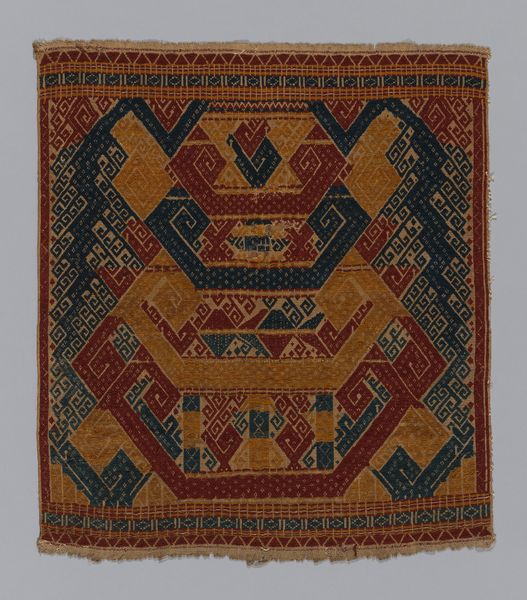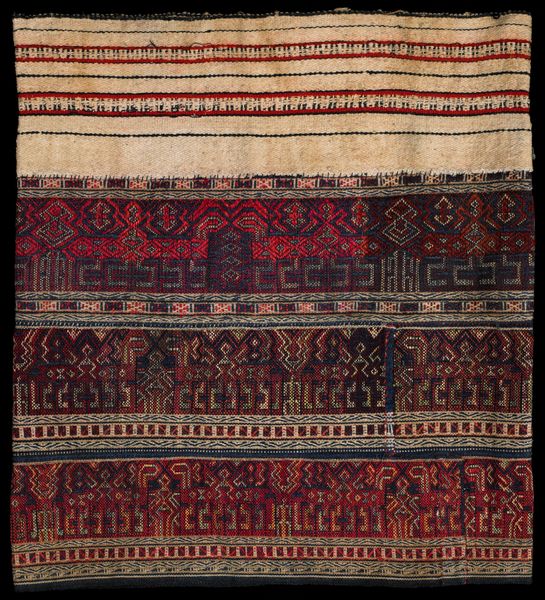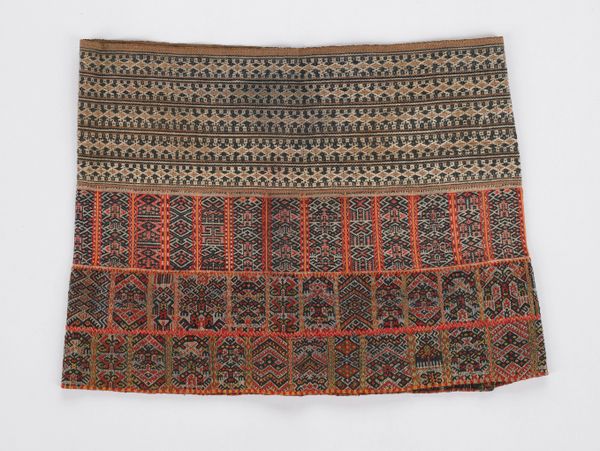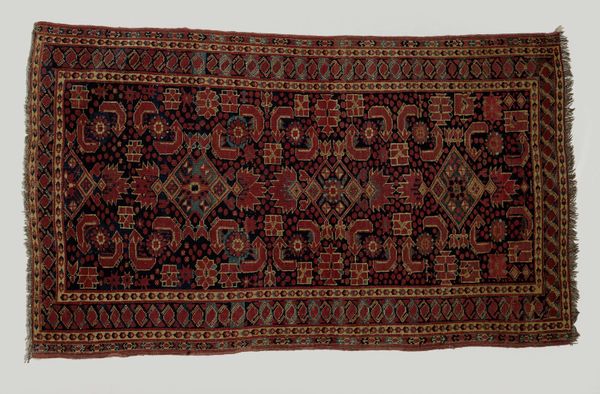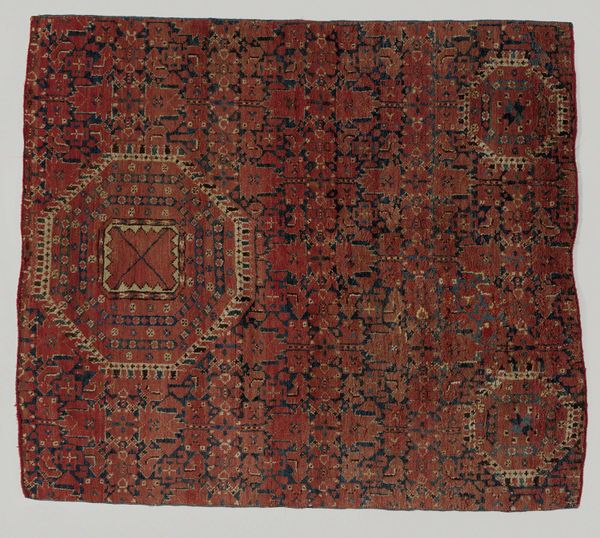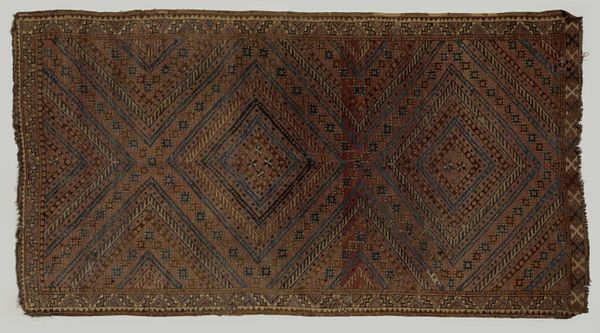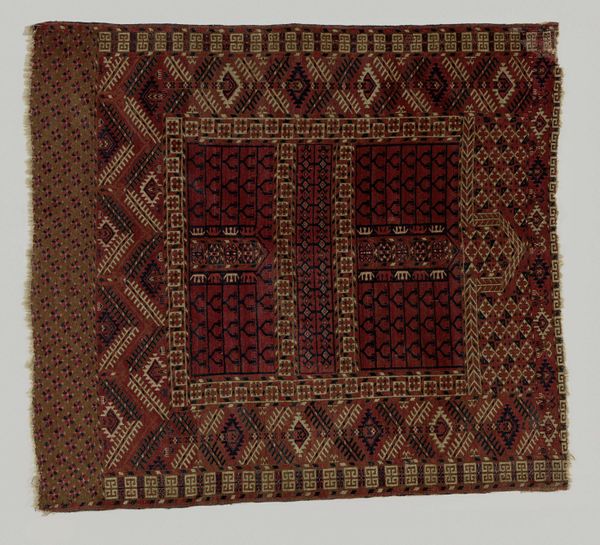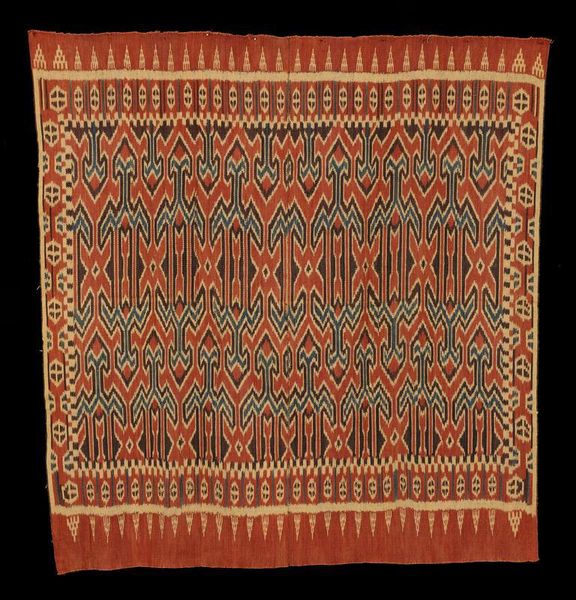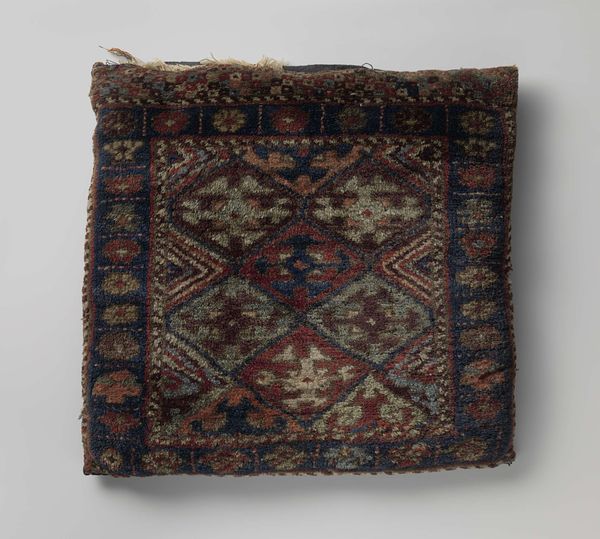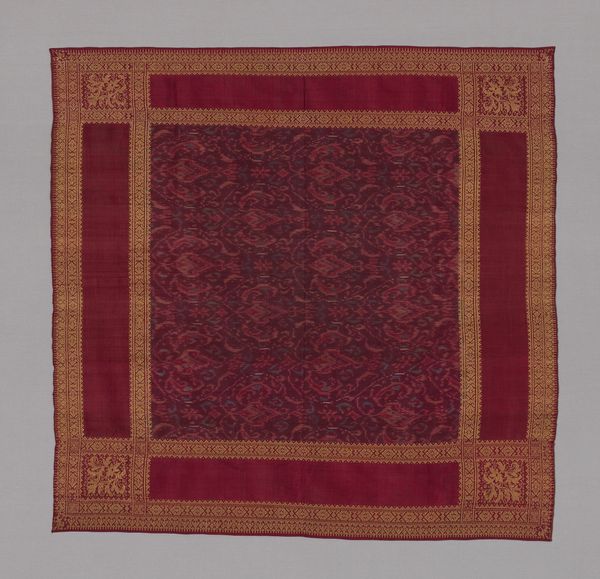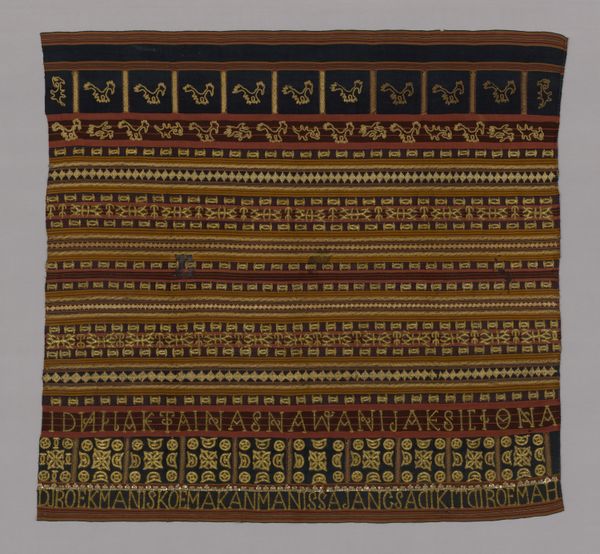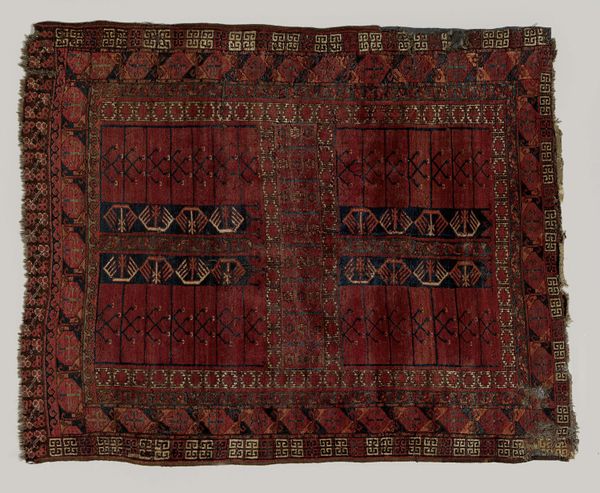
fibre-art, weaving, textile
#
natural stone pattern
#
fibre-art
#
asian-art
#
weaving
#
textile
#
geometric pattern
#
pattern design
#
repetitive shape and pattern
#
geometric
#
fabric design
#
repetition of pattern
#
regular pattern
#
pattern repetition
#
textile design
#
layered pattern
Dimensions: 121.6 × 116.3 cm (47 7/8 × 45 3/4 in.)
Copyright: Public Domain
Curator: Here we have a stunning example of Sumatran textile art, a Tapis, or woman's sarong, dating back to the 19th century. Curator: It's captivating! My first impression focuses on the repeated patterns and, quite clearly, on the textile and the work invested in its construction. Curator: Absolutely. The sarong transcends mere functionality. Consider the rich symbolism embedded within. Textiles in Sumatran culture often denoted status, identity, and the passage into womanhood. The patterns aren't merely decorative, they can allude to cosmology, social roles, and historical narratives particular to women. Curator: Yes, and what strikes me is the contrast between the complexity of the patterns and the evident labour involved. Weaving is laborious and can you imagine how much time it takes? Considering that it signals social position, there is a marked contradiction of a high social status and a demanding manual process to get there. How might we understand that better? Curator: Indeed. By understanding gendered labour, one can see how weaving can signify social class, whilst paradoxically occupying the domestic space. We must also consider the knowledge embedded in creating the dyes – are they natural or synthetic, for example. What global trading systems made these elements available and how might colonialism play a role here? The textile itself is also speaking of broader exchanges. Curator: Good point. I hadn't considered it but of course dyes need to come from somewhere. It highlights that every single work of art is underpinned by flows of labour, materials and processes which often get obscured in more aesthetic approaches. How do we reclaim that perspective? Curator: Precisely! This tapis invites us to consider a woven, embodied history where aesthetics meet global exchanges and societal complexity. Curator: I agree; seeing it like that gives us insight to what underpins this. Thank you!
Comments
No comments
Be the first to comment and join the conversation on the ultimate creative platform.
